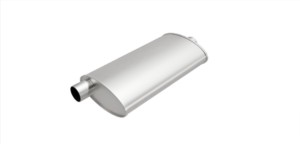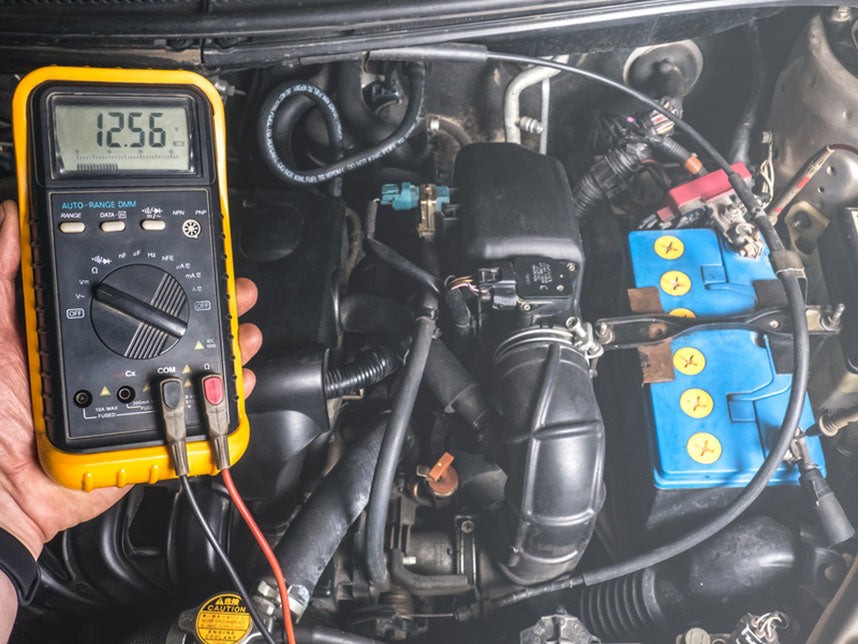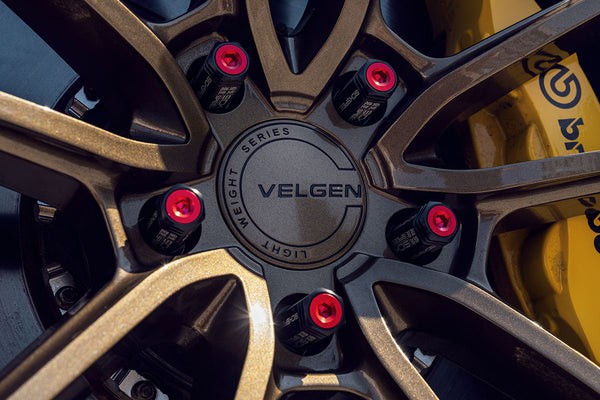**What Are Common Sources of Rattling Noises in the Cabin or Suspension?**
Rattling noises in your vehicle can be frustrating, but understanding their sources is the first step to fixing them. CARDIAGTECH.BIZ can help you identify and address these issues, ensuring a smoother and quieter driving experience. By exploring common sources, diagnostic steps, and preventative measures, we equip you with the knowledge to tackle these automotive nuisances, enhancing your vehicle’s performance and your peace of mind with our auto repair tools and car diagnostic equipment.
1. Understanding the Culprits: Common Sources of Rattling Noises
Rattling noises in your car can stem from various components, each with its distinct characteristics. Identifying the source is crucial for effective troubleshooting, and CARDIAGTECH.BIZ can help.
1.1 Engine Bay Rattles
Rattles under the hood often indicate issues with belts, chains, or other engine components. According to a study by the University of Michigan Transportation Research Institute, engine-related noises are among the most frequently reported car problems.
- Loose or Worn Belts: Serpentine belts drive essential components like the alternator and power steering pump. When these belts become loose or worn, they can produce a distinct rattling sound.
- Timing Chain Issues: A loose timing chain can cause rattling, especially during acceleration.
- Internal Engine Components: Worn lifters, valves, or other internal parts can also contribute to engine rattles.
1.2 Suspension System Rattles
The suspension system is a common source of rattles, especially when driving on uneven surfaces. According to J.D. Power’s Vehicle Dependability Study, suspension issues are a frequent complaint among car owners.
- Worn Suspension Components: Ball joints, sway bar links, and bushings can wear out over time, leading to rattling noises, particularly when driving over bumps.
- Failing Wheel Bearings: Defective wheel bearings can produce a rattling or humming noise as the wheels rotate.
1.3 Exhaust System Rattles
Rattles from the exhaust system are often caused by loose heat shields or damaged components. A study by the Environmental Protection Agency (EPA) indicates that exhaust system issues can also affect vehicle emissions.
- Loose Heat Shields: These metal shields protect the vehicle from exhaust heat but can rust or come loose, causing rattles, especially during engine revving.
- Damaged Muffler or Catalytic Converter: Problems with these components can lead to persistent rattling sounds from under the car.
1.4 Interior Cabin Rattles
Sometimes, the simplest explanations are the correct ones. Rattles inside the cabin can often be attributed to loose objects or trim panels.
- Loose Objects: Items in the glovebox, cupholders, or storage compartments can rattle around.
- Faulty Trim Panels: Plastic or metal trim pieces can loosen over time, creating irritating noises.
Table 1: Common Sources of Rattling Noises
| Source | Common Causes | Diagnostic Tips |
|---|---|---|
| Engine Bay | Loose belts, timing chain issues, worn engine components | Listen for noises during acceleration; inspect belts for wear. |
| Suspension System | Worn ball joints, sway bar links, failing wheel bearings | Check for noises over bumps; inspect suspension components for damage. |
| Exhaust System | Loose heat shields, damaged muffler or catalytic converter | Listen for noises during engine revving; inspect exhaust system for rust. |
| Interior Cabin | Loose objects, faulty trim panels | Check glovebox and storage; inspect trim panels for looseness. |
2. Pinpointing the Problem: How to Diagnose Rattling Noises Effectively
Diagnosing rattling noises requires a systematic approach. Follow these steps to identify the issue accurately, and remember that CARDIAGTECH.BIZ offers the tools you need for a thorough inspection.
2.1 Step 1: Note When the Noise Occurs
Pay attention to when the rattling happens, as this can provide valuable clues about the source of the problem.
- While Accelerating: This may indicate engine or exhaust system problems.
- During Braking: Check for issues with the brakes, such as loose calipers or worn pads.
- Over Bumps or Rough Roads: The suspension system is likely the culprit.
- While Idling: Look for loose components under the hood.
2.2 Step 2: Zero In on the Sound’s Location
Take a drive with the windows down to help identify where the noise is coming from.
- Front of the Car: Check under the hood or the suspension.
- Underneath the Vehicle: Inspect the exhaust system.
- Inside the Cabin: Look for loose interior components or objects.
2.3 Step 3: Conduct a Visual Inspection
After identifying the general area, visually inspect the components.
- Look for loose or damaged parts.
- Check for signs of rust or wear, particularly in the exhaust and suspension systems.
- Remove any objects trapped under seats or in storage compartments.
2.4 Step 4: Test Specific Components
- Gently shake suspected parts, such as heat shields or the muffler, to see if they produce the rattle.
- Push down on each corner of the car to check the suspension for unusual movements or sounds.
Table 2: Diagnostic Steps for Rattling Noises
| Step | Action | Possible Causes |
|---|---|---|
| Note When Noise Occurs | Identify when the rattling happens | Engine, exhaust, suspension, or brake issues |
| Locate the Sound’s Location | Drive with windows down to pinpoint the noise’s origin | Front, underneath, or inside the cabin |
| Visual Inspection | Inspect components for damage, rust, or loose parts | Loose parts, rust, wear and tear |
| Test Specific Components | Shake suspected parts or check suspension for unusual sounds | Heat shields, muffler, suspension components |
3. The Fix is In: Common Solutions for Rattling Noises
Once you’ve identified the cause of the rattling, you can determine whether it’s a simple fix or requires professional help. Here are some potential solutions.
3.1 Engine Bay Solutions
- Replace Worn or Loose Belts: This can resolve many common engine rattles.
- Tighten or Replace the Timing Chain: Addressing timing chain issues can prevent further engine damage.
- Consult a Mechanic for Internal Engine Issues: Complex engine problems require professional expertise.
3.2 Suspension System Solutions
- Replace Worn-Out Ball Joints, Bushings, or Sway Bar Links: Replacing these components can restore your car’s handling and reduce noise.
- Check and Replace Wheel Bearings: Failing wheel bearings can be a safety hazard, so address them promptly.
3.3 Exhaust System Solutions
- Reattach or Replace Loose Heat Shields: Use clamps or welding to secure heat shields.
- Repair or Replace Damaged Mufflers or Catalytic Converters: These repairs can improve your car’s performance and reduce emissions.
3.4 Interior Cabin Solutions
- Secure Loose Trim Panels: Use adhesive or fasteners to keep trim panels in place.
- Remove Unnecessary Items: Decluttering your car can eliminate many simple rattles.
Table 3: Common Solutions for Rattling Noises
| Source | Solution | Tools Needed |
|---|---|---|
| Engine Bay | Replace belts, tighten timing chain, consult a mechanic | Wrench set, timing chain tool, diagnostic scanner (available at CARDIAGTECH.BIZ) |
| Suspension System | Replace ball joints, bushings, wheel bearings | Socket set, ball joint separator, wheel bearing press (available at CARDIAGTECH.BIZ) |
| Exhaust System | Reattach heat shields, repair muffler or catalytic converter | Welding equipment, clamps, exhaust repair kit (available at CARDIAGTECH.BIZ) |
| Interior Cabin | Secure trim panels, remove loose items | Adhesive, fasteners, basic hand tools |
4. When to Call the Pros: Seeking Professional Help
While many rattling noises can be addressed with DIY solutions, others require the expertise of a professional mechanic. Here’s when to seek help.
- The rattling noise persists after your initial inspection and fixes.
- You notice additional symptoms, like reduced performance or warning lights.
- The issue involves critical components like the engine, brakes, or suspension.
5. Staying Ahead: Preventing Rattling Noises
Preventative maintenance can help you avoid rattling noises altogether.
- Regular Inspections: Schedule routine maintenance checks to catch issues early.
- Tighten Loose Components: Periodically inspect and secure loose bolts, screws, and trim pieces.
- Replace Worn Parts: Address wear and tear promptly to prevent further damage.
Table 4: Tips for Preventing Rattling Noises
| Tip | Description | Frequency |
|---|---|---|
| Regular Inspections | Schedule routine maintenance checks to catch issues early | Every 6 months |
| Tighten Loose Components | Periodically inspect and secure loose bolts, screws, and trim pieces | Monthly |
| Replace Worn Parts | Address wear and tear promptly to prevent further damage | As needed |
6. CARDIAGTECH.BIZ: Your Partner in Automotive Care
At CARDIAGTECH.BIZ, we understand the importance of maintaining a smooth and quiet ride. Our extensive range of diagnostic tools and auto repair equipment is designed to help you identify and address rattling noises effectively.
6.1 Featured Products
- Diagnostic Scanners: Quickly identify the source of engine-related rattles.
- Suspension Repair Kits: Replace worn suspension components with high-quality parts.
- Exhaust System Tools: Repair or replace exhaust components with ease.
- Hand Tool Sets: Secure loose trim panels and other interior components.
Table 5: CARDIAGTECH.BIZ Recommended Products
| Product | Description | Use |
|---|---|---|
| Diagnostic Scanners | Identifies engine-related rattles | Diagnosing engine issues |
| Suspension Repair Kits | Replaces worn suspension components | Repairing suspension problems |
| Exhaust System Tools | Repairs or replaces exhaust components | Fixing exhaust-related rattles |
| Hand Tool Sets | Secures loose trim panels and other interior components | Addressing interior cabin noises |
7. The Science Behind the Sounds: Understanding Vehicle Noises
Understanding the science behind vehicle noises can help you diagnose problems more effectively. According to a study by MIT, analyzing the frequency and amplitude of sounds can reveal specific mechanical issues.
7.1 Frequency Analysis
Frequency analysis involves measuring the pitch of the noise. High-pitched noises often indicate issues with belts or pulleys, while low-pitched noises may suggest problems with the exhaust system or suspension.
7.2 Amplitude Measurement
Amplitude measurement involves measuring the loudness of the noise. Loud noises often indicate significant mechanical problems, while quiet noises may be due to minor issues like loose trim panels.
7.3 Using Diagnostic Tools
Diagnostic tools like sound level meters and frequency analyzers can help you measure and analyze vehicle noises. These tools are available at CARDIAGTECH.BIZ and can provide valuable insights into the source of the problem.
8. Case Studies: Real-World Examples of Rattling Noise Diagnosis
Examining real-world examples can provide valuable insights into diagnosing and fixing rattling noises. Here are a few case studies.
8.1 Case Study 1: Engine Bay Rattle
A customer reported a rattling noise from under the hood, especially during acceleration. Using a diagnostic scanner from CARDIAGTECH.BIZ, the mechanic identified a loose timing chain. Replacing the timing chain resolved the issue.
8.2 Case Study 2: Suspension System Rattle
A customer complained of a rattling noise when driving over bumps. A visual inspection revealed worn ball joints. Replacing the ball joints with a suspension repair kit from CARDIAGTECH.BIZ eliminated the noise.
8.3 Case Study 3: Exhaust System Rattle
A customer noticed a rattling noise from under the car, especially during engine revving. The mechanic found a loose heat shield. Reattaching the heat shield with clamps from CARDIAGTECH.BIZ solved the problem.
9. The Future of Automotive Diagnostics: Innovations in Noise Detection
The field of automotive diagnostics is constantly evolving, with new technologies emerging to help mechanics diagnose problems more effectively. One promising innovation is the use of artificial intelligence (AI) to analyze vehicle noises.
9.1 AI-Powered Noise Detection
AI-powered systems can analyze vehicle noises in real-time and identify potential problems. These systems use machine learning algorithms to recognize patterns in the sound and compare them to a database of known issues.
9.2 Benefits of AI-Powered Diagnostics
- Faster Diagnosis: AI-powered systems can quickly identify the source of the noise, saving time and money.
- Improved Accuracy: AI-powered systems can detect subtle differences in sound that humans may miss.
- Remote Diagnostics: AI-powered systems can be used to diagnose problems remotely, allowing mechanics to provide assistance from anywhere in the world.
10. Frequently Asked Questions (FAQs)
- What are the most common causes of rattling noises in the cabin?
Rattling noises in the cabin are often caused by loose objects in storage compartments or faulty trim panels. - How can I diagnose a rattling noise in my car’s suspension?
To diagnose a suspension rattle, drive over bumps and listen for noises, then visually inspect suspension components for wear or damage. - What tools do I need to fix a rattling exhaust system?
Fixing a rattling exhaust system may require welding equipment, clamps, and an exhaust repair kit, all available at CARDIAGTECH.BIZ. - When should I seek professional help for a rattling noise?
Seek professional help if the rattling persists after your own attempts to fix it, or if it involves critical components like the engine or brakes. - Can regular maintenance prevent rattling noises?
Yes, regular maintenance, including inspections and tightening loose components, can prevent many rattling noises. - What role do diagnostic scanners play in identifying rattling noises?
Diagnostic scanners can help identify engine-related issues that may be causing rattling noises, providing quick and accurate diagnoses. - Are there specific sounds that indicate particular problems?
Yes, high-pitched noises may indicate belt or pulley issues, while low-pitched noises may suggest exhaust or suspension problems. - How does CARDIAGTECH.BIZ support automotive professionals in diagnosing these issues?
CARDIAGTECH.BIZ offers a wide range of diagnostic tools and repair equipment designed to help professionals efficiently identify and resolve rattling noises. - What new technologies are being developed to detect vehicle noises?
AI-powered noise detection systems are being developed to analyze vehicle noises in real-time, providing faster and more accurate diagnoses. - What is the first step I should take when I hear a rattling noise in my car?
The first step is to note when the noise occurs (e.g., during acceleration, braking, or over bumps) to help narrow down the potential sources.
Conclusion: Take Control of Your Car’s Comfort with CARDIAGTECH.BIZ
Rattling noises in cars can be frustrating, but they often provide valuable clues about underlying problems. By identifying the source and addressing the issue promptly, you can restore your car’s smooth performance and enjoy a quieter ride. Visit CARDIAGTECH.BIZ today to find the tools and equipment you need to tackle those annoying rattles and keep your vehicle in top condition.
Don’t let those rattling noises drive you crazy! Contact CARDIAGTECH.BIZ now at 276 Reock St, City of Orange, NJ 07050, United States, or reach us via Whatsapp at +1 (641) 206-8880 for expert advice and high-quality auto repair tools. Our team is ready to help you diagnose and fix any issue, ensuring a smooth and quiet ride. Act now and experience the difference with CARDIAGTECH.BIZ! Visit our website at CARDIAGTECH.BIZ.





